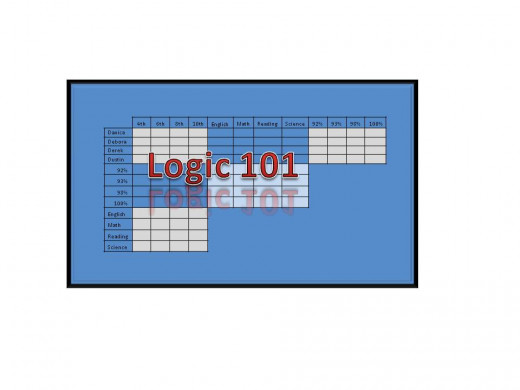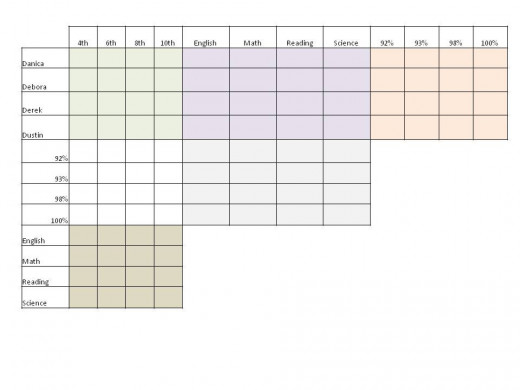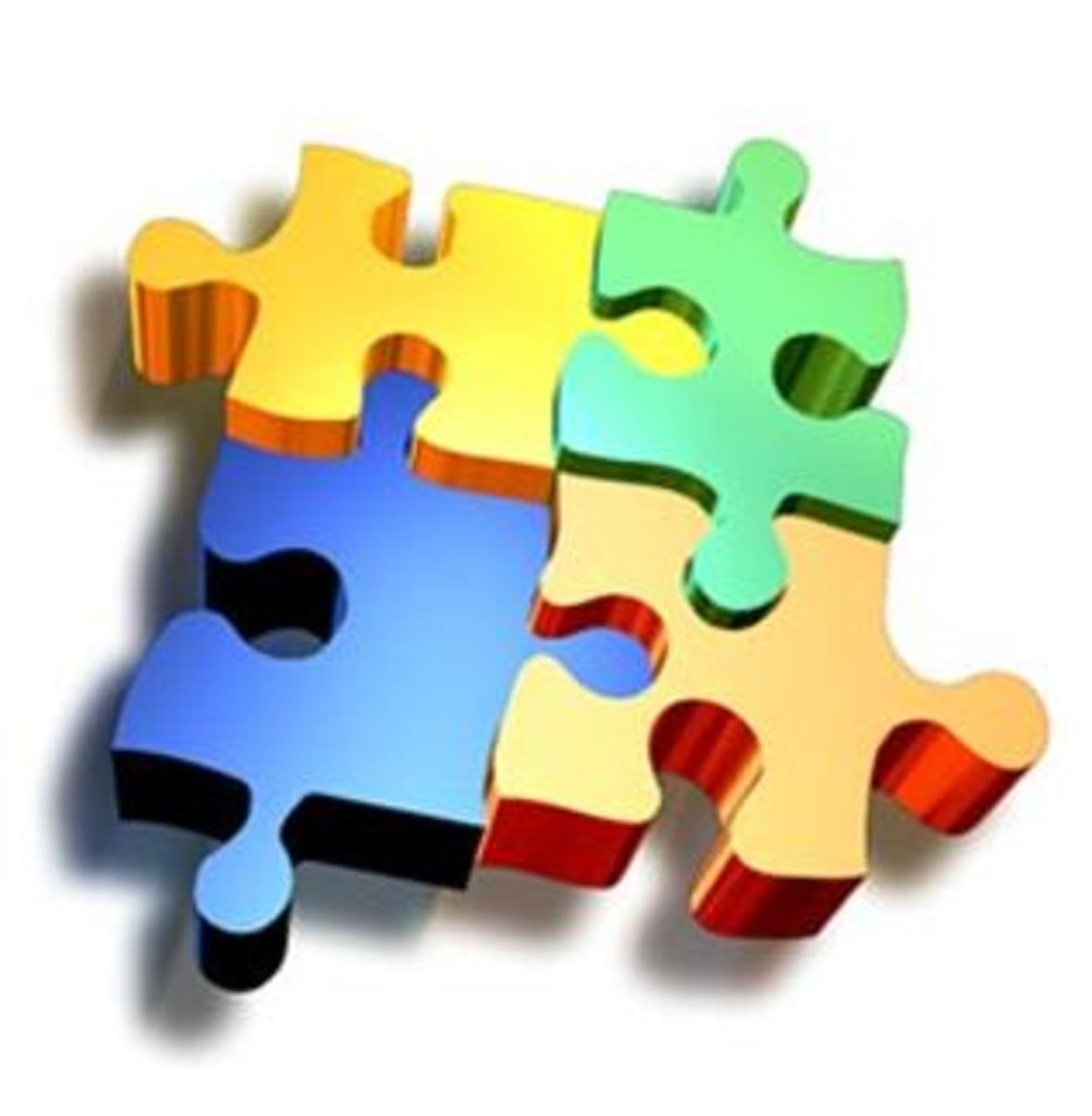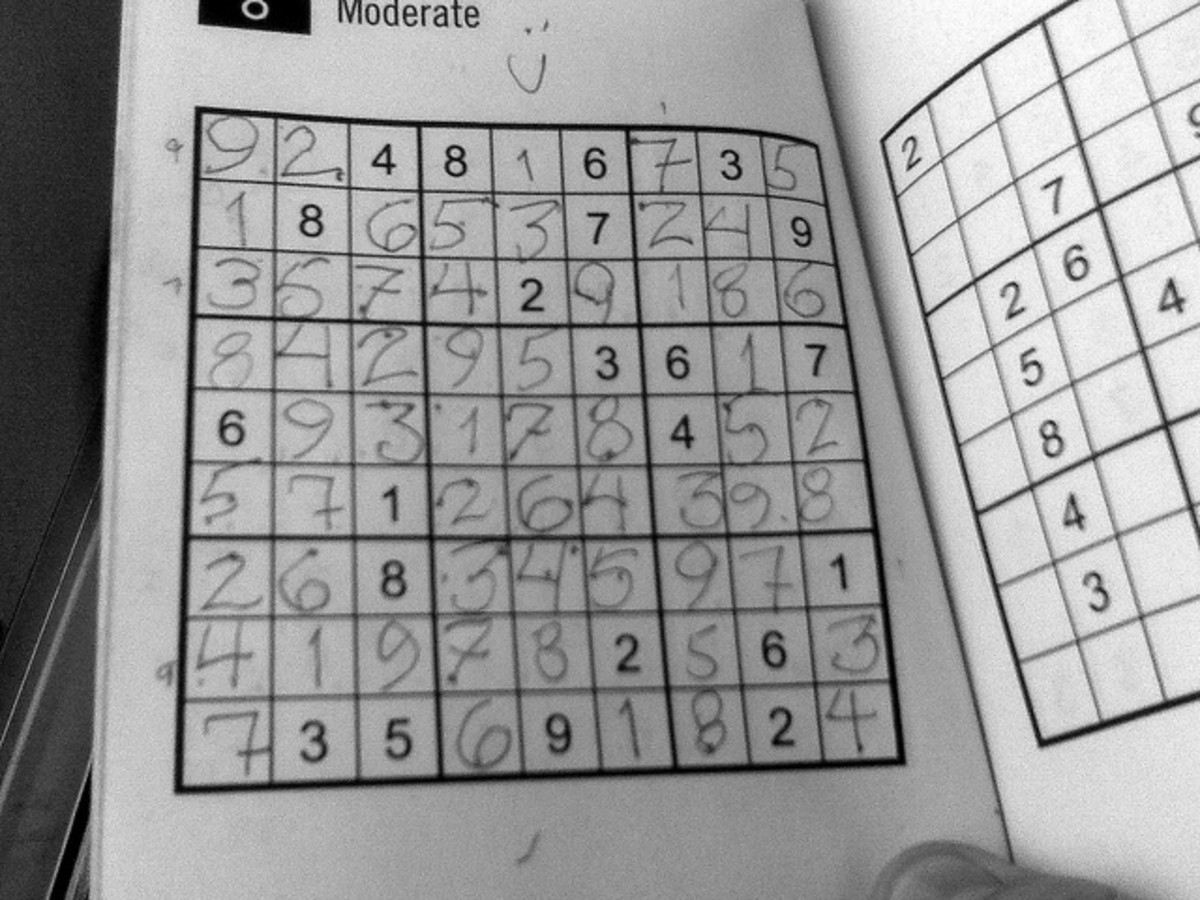Solving Logic Puzzles
Solving Logic Puzzles

Logic Puzzles
I have to admit, one of my weaknesses in life is picking up a logic puzzle book. There’s just something captivating about discovering the solution to a logic problem. Of course, I grew up on Nancy Drew books, too, so my weakness goes all the way back to my childhood. Wikipedia states that the logic puzzle was introduced by Lewis Carroll who wrote Alice’s Adventures in Wonderland. Although it sounds logical enough if you think about that storyline, there is no proof that he is actually responsible for the initiation of logic puzzles. However, the founding father doesn’t really matter here, what matters is what the logic puzzle can do.
Puzzles provide entertainment on the surface, but there are many other advantages to solving puzzles on a regular basis. Cross Sums promote math skills. Word Searches promote linguistic skills and visual acuity. Logic puzzles enhance reasoning skills. Jigsaw puzzles improve visual acuity. All these thinking processes force the brain to work, and that work pays off by forming new connections. I won’t go into the biological aspect of what that means for now, just realize that “exercising” your brain is just as important to your overall health as practicing good eating habits or exercising your body on a daily basis. Keeping the mind active can increase your quality of life, and even prevent symptoms of Alzheimer’s disease. (Smith, Wayne, & Segal, 2013).
Logic puzzles come in a variety of forms ranging from a jigsaw puzzle where you need to use logic to find the pieces that link together, to a logic puzzle grid where you need to use logic to find relationships between concepts. Two main logical processes help solve logic puzzle grids; inductive and deductive reasoning skills. These are not the only methods of solving logic problems, though; however, these are the two more commonly effective methods I use to solve these types of problems. So let’s begin by looking at a logic puzzle grid example I developed.
Logic Puzzle Grid

The Parts of a Logic Puzzle - Grid Style
The grid
The grid is the chart where you can place notes to help you solve the puzzle. I typically color in the cell where I know the relationship exists. I typically place an x in a cell where I know there is no relationship. And finally, I typically place the clue number in the cell where I know there is a good hint, but I haven’t figured the relationship out exactly. This will make a little more sense as we progress through this guide.
The directions
The directions for each logic puzzle should not be overlooked. They can provide helpful hints to solving the puzzle that are not mentioned in the clues. For example, the directions for this logic puzzle include the fact that Dustin is the 10th grader.
- Sally and James were the proud parents of 4 children. They decided to take their children to their favorite buffet because they all brought home an A on an important test from school. Each child is in a different grade in school, 4th, 6th, 8th and 10th. Each child’s score was for a different subject, either Reading, Math, Science or English class. They chose a local buffet because each child had a different favorite food they liked to eat. This was a rare day in the Andrew’s household, and each child deserved to earn their A as they had studied hard for those tests for days! Tenth grader Dustin had never received an A on one of his English compositions before today! Using the clues below, can you discover the score each child earned, the class in which they earned the score, and the year of school their child attends?
The Clues
- The couple had four children, Derek, a 6th grader, the child who earned 98%, and one that was very proud of their English test.
- Deborah (who isn’t in the 10th grade) and the child who earned 100% congratulated the other 2 siblings.
- The child in 4th grade did not earn either the lowest score or the 93% in his class, which none of these were in Reading.
- Neither Danica nor the person with the score of 100% brought home a Math test.
- The 6th grader (who is not Danica) and the child with the Science test (which is not Debora) both wanted to call their grandparents to ask them to meet them at the buffet.
- The child with the Math grade (which is not the 8th grader) and the child with the score of 92% (which was not the Science grade) placed their tests on the refrigerator with a magnet.
Obviously, this is the main tool you will use to solve the logic problems. However, as you read through these, you probably won’t get the solution on the first time through your clues.
The Puzzle
- The Logic Puzzle - grid style
If you would like to try another puzzle I've developed, follow this link for a free download. I enjoy creating puzzles just as much as solving them.
Tutorial for solution
- Solving Logic Grid Puzzles Tutorial
If you get stuck, I also developed a tutorial for this logic puzzle on this website below.
Try your own!
Solving (or creating) logic puzzles - and other types of puzzles - are a great way to exercise your brain. It is also a wonderful way to practice critical thinking skills. In addition, you can even enhance creativity by trying to construct your own puzzles - or coming up with other ways to solve a puzzle - or maybe even tackling a puzzle that you are unfamiliar with its concept!
In essence:
Puzzles are a great way to enhance and increase your knowledge!
Reference
Smith, M., Wayne, M., & Segal, J. (2013, April). Alzheimer’s & dementia prevention. Retrieved from http://www.helpguide.org/elder/alzheimers_prevention_slowing_down_treatment.htm







